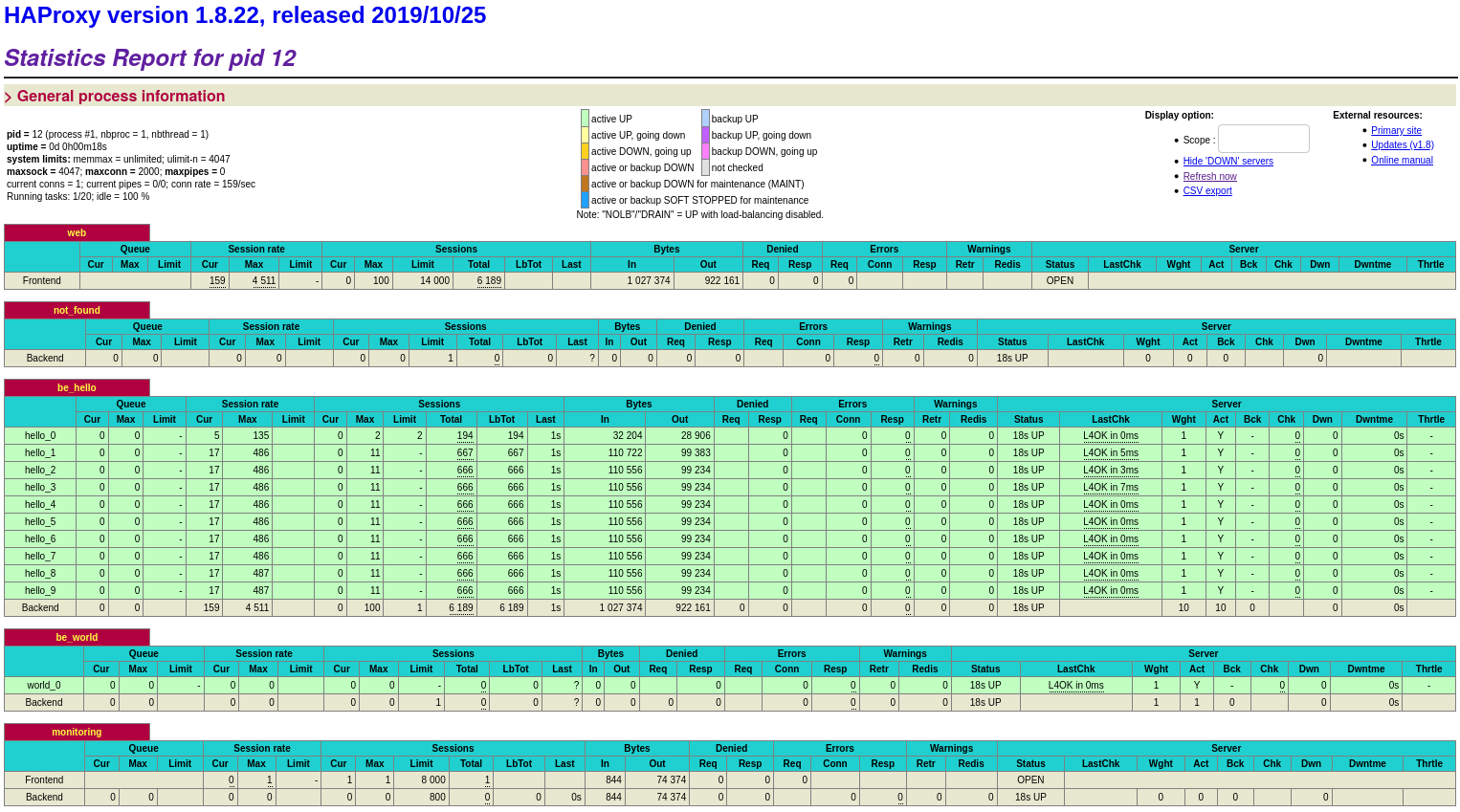It’s possible to use string maps to simplify Haproxy configuration files. Map files are read on startup and its values stored in a tree for fast lookups.
This example uses map files to
- select backend
- force redirect to HTTPS based on domain
- set HSTS header
./test.sh-------------------------------------------------------------------------------- $ curl -siH Host: hello.example.org http://localhost:8080 HTTP/1.1 200 OK Date: Fri, 15 Nov 2019 09:33:53 GMT Content-Type: text/plain Content-Length: 7 Request-Header-Host: hello.example.org Request-Backend-Found: be_hello hello! -------------------------------------------------------------------------------- -------------------------------------------------------------------------------- $ curl -skiH Host: hello.example.org https://localhost:8443 HTTP/1.1 200 OK Date: Fri, 15 Nov 2019 09:33:53 GMT Content-Type: text/plain Content-Length: 7 Request-Header-Host: hello.example.org Request-Backend-Found: be_hello Strict-Transport-Security: include_subdomains; preload; max-age=31536000; hello! -------------------------------------------------------------------------------- -------------------------------------------------------------------------------- $ curl -siH Host: world.example.org http://localhost:8080 HTTP/1.1 302 Found Cache-Control: no-cache Content-length: 0 Location: https://world.example.org/ -------------------------------------------------------------------------------- -------------------------------------------------------------------------------- $ curl -skiH Host: world.example.org https://localhost:8443 HTTP/1.1 200 OK Date: Fri, 15 Nov 2019 09:33:53 GMT Content-Type: text/plain Content-Length: 7 Request-Header-Host: world.example.org Request-Backend-Found: be_world world! --------------------------------------------------------------------------------
The stats page can be accessed on http://localhost:63661/haproxy?stats.
